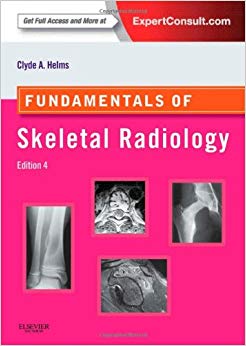
Fundamentals of Skeletal Radiology remains a perfect first book on musculoskeletal radiology and a terrific quick review of the subject. With its entertaining writing style and many new and improved imaging examples, turn to the "pink book" for an effective, concise, and enjoyable introduction to musculoskeletal imaging – just as tens of thousands of radiology students, residents, and clinicians have done with previous editions of this medical reference book.
"A clear, concise and quick reference, dipping into the pages is like slipping on a favourite pair of slippers – comforting and reassuring!" (Tracey Thorne, Specialist reporting radiographer, Airedale NHS Foundation Trust – Sept14) "Some may lament the cover colour and although the fourth edition ‘pink book’ is a more subtle cerise these days, it is still the go-to guide for skeletal radiology and the pearls that every reporter needs in order to build a firm foundation of MSK knowledge" Reviewed by: RAD Magazine, Sept 2014
"Whilst the books primary audience is radiology residents in the USA it is an excellent book for all students of medical imaging and one that I recommend to all those who are developing an interest in skeletal imaging." Reviewed by: Stephen Boynes, University of Bradford, 2014
- Visually grasp musculoskeletal imaging concepts and techniques through hundreds of high-quality digital radiographs, MRIs, bone scans, and CT images.
- Easily understand the basics of skeletal radiology from the author’s succinct, highly accessible writing style that makes information straightforward for beginners.
- Quickly grasp the MSK radiology fundamentals you need to know through an easy-to-understand format and hundreds of radiographs and images.
- Discern subtleties and nuances by examining full-color imaging examples.
- Apply the latest knowledge and techniques in skeletal imaging. Extensive updates equip you with new technology and major advancements as well as an increased emphasis on MR imaging and enhanced coverage of knee imaging.
- Address radiation dosage concerns and apply new techniques aimed at early detection.

